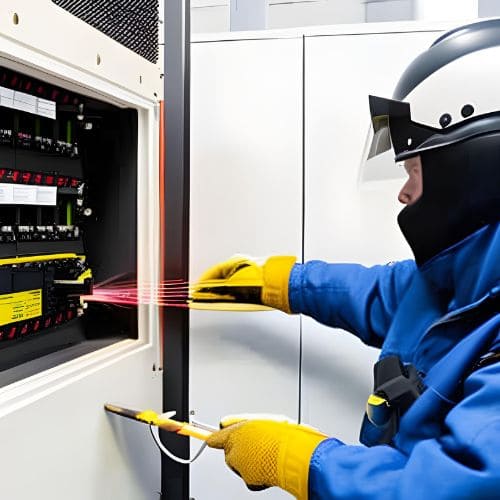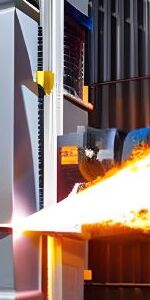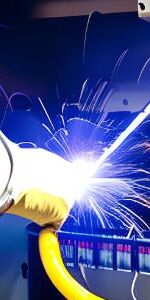The Significance of Arc Flash Hazard Analysis and Mitigation Techniques
Electrical arcs may emerge when a gas is subjected to a voltage greater than its ability to block. An arc will form when the voltage is high enough to ionize the area between the conductors. Air transforms into a superb electrical conductor when ions are introduced. Ionization of the air creates a current that warms and illuminates it. As a result of this heat, ionized air rises, creating an arch-shaped current. Due to this, the phenomenon is referred described as an arch current. An arc flash is capable of producing temperatures of up to 20,000 degrees Celsius.
Arc flash hazards pose a threat to both humans and property. Arc in flash offers a variety of commercial benefits, including:
- Direct expenses include payment for medical treatment, therapy, worker’s compensation, the cost of investigating the incident, and lost productivity.
- Indirect expenses include legal and judgement fees, court fees, penalties, insurance premiums, repair costs, and the cost of recruiting a new employee.
- When unpleasant events occur, your reputation suffers, obtaining a job becomes more difficult, and you may even face criminal charges.
- Consumers prefer to avoid businesses with a high accident rate, which can lead to lost sales and the loss of a contractor’s license.
- Arcing errors Flash has a propensity to stick in people’s minds, which may result in missed opportunities and wasted funds.
Table of Contents

Where Do Arc Flash Dangers Originate?
- Utilizing the incorrect surface for the probe inappropriate installation, work procedures, and equipment usage of inferior electrical components
- Equipment holes or insulation damage
- Eliminate panel interference
- Dust on electrical equipment or corrosion
- Inadequate upkeep of switches and circuit breakers
- Visible live components or frayed connections to either high-voltage lines or a constant power supply are hazardous.
- Moisture in electrical equipment

Methods for Reducing the Risk of Arc Flashes:
Eliminating electrical components:
Potential dangers are minimized to the greatest degree possible. Work should not be performed on live equipment, and testing the equipment after it has been de-energized or re-energized necessitates special caution. Remote tracking is used to keep circuit breakers away from arc flash boundaries because they represent a risk to the user.
Utilize technology without taking risks:
To determine the dangers associated with short circuits and the interaction between protective devices, arc flash analysis and power system studies are conducted. Use low-risk options, such as remote rack equipment, to safeguard people and property.
Changes must be made to the electrical and control systems:
Depending on the amount of threat posed by the arc flash, ensure that the appropriate level of PPE (personal protective equipment) is available. Modifications are being made to engineering tools and procedures to make them safer. Installing circuit breakers and energy distribution systems restricts the quantity of energy that may go through.



Diminish the fault current that is accessible:
Utilizing noncurrent limiting breakers, industries will be able to regulate the quantity of accessible fault current. These items may be utilized and maintained with an open tie. By limiting the available fault current, the disconnection between dual power sources decreases arc flash dangers during maintenance. By halting the energy flow, current-limiting reactors may prevent arcing difficulties.
Change the energy of the blast:
Make arc-resistant materials more ubiquitous. Arc-resistant switchgear collects the heat and energy generated by arc flashes and channels it to an unoccupied region through ducts. To achieve this, stronger hinges, pressure relief vents on the top, and sealed joints are utilized.
CareLabs provides a wide array of research and analysis services for arc flash. Experts examine arc flash threats to ensure that your safety strategy is current. CareLabs can identify arc flash hazards and is well-versed in the application of modern technology to mitigate these dangers. ETAP (Electrical Transient Analysis Program) software is utilized for research and analysis in CareLabs. To ensure that there is staff available for both normal work and urgent crises, CareLabs employs crew members in a variety of places. Today, CareLabs enjoys a good standing, a sizable clientele, and ISO 9001:2008 accreditation. In all major cities in Hong Kong, including Hong Kong Island, Kowloon, New Territories, and Lantau Island, CareLabs offers testing and analysis for arc flash.
RELATED NEWS








Coordination


RELATED NEWS











